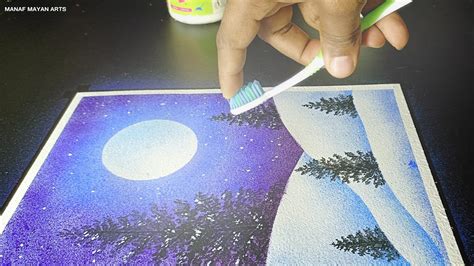Winter Spray Painting Simplified: Tips and Tricks for Success
Winter's chill doesn't have to halt your painting projects. With the right preparation and techniques, you can achieve professional-looking results even when the temperature drops. This comprehensive guide simplifies winter spray painting, covering everything from choosing the right paint to tackling common cold-weather challenges.
Why is Winter Spray Painting Different?
Spray painting in winter presents unique obstacles. Colder temperatures significantly impact paint drying time, viscosity, and overall adhesion. Lower temperatures can also affect your own comfort and efficiency while working outdoors. Understanding these challenges is the first step to conquering them.
Choosing the Right Paint for Winter Conditions
Not all paints are created equal when it comes to cold-weather application. Alkyd paints (oil-based) generally offer better low-temperature performance than water-based acrylics, maintaining better flow and preventing premature drying. However, acrylic latex paints formulated for low temperatures are becoming increasingly common and offer a more environmentally friendly option. Always check the manufacturer's specifications for the minimum application temperature.
What kind of spray paint is best for cold weather?
Many spray paint manufacturers produce specialized formulations for colder temperatures. Look for paints explicitly labeled as suitable for low temperatures or those with improved low-temperature flexibility to prevent cracking.
Essential Preparation: The Key to Winter Spray Painting Success
Proper preparation is paramount, even more so in winter. This includes:
- Surface Preparation: Thoroughly clean and dry the surface to remove dirt, dust, and any previous coatings. Cold surfaces may require extra cleaning to remove any frost or ice.
- Temperature Control: If possible, work on warmer days or in a sheltered area, minimizing wind chill. A garage or covered porch can significantly improve conditions. Avoid spraying when the temperature is significantly below the paint's recommended application temperature.
- Protecting Yourself: Wear appropriate clothing to stay warm and dry, including gloves, a hat, and warm layers. A respirator is essential to protect your lungs from paint fumes.
How to Spray Paint in Cold Weather: Step-by-Step Guide
- Warm the Paint: Before spraying, bring the paint to room temperature. This improves flow and prevents nozzle clogging. You can leave the can indoors for a few hours or submerge it in a bucket of warm water (not hot!).
- Shake Well: Vigorous shaking is crucial to achieve a consistent spray pattern. Follow the manufacturer's instructions on shaking time.
- Test Spray: Always test spray on a scrap piece of similar material to check the spray pattern and paint consistency.
- Even Coats: Apply thin, even coats, allowing adequate drying time between coats. Avoid heavy coats, which are more prone to cracking in cold temperatures.
- Drying Time: Be patient! Drying times will be significantly longer in cold weather. Allow ample time between coats and before handling the finished project.
Troubleshooting Common Winter Spray Painting Issues
My paint is too thick to spray in cold weather, what do I do?
If your paint is too thick, try adding a small amount of paint thinner or reducer according to the manufacturer's instructions. Never add too much, as this can compromise the paint's durability.
My paint is drying too quickly in cold weather.
This is less common but can happen in particularly dry, windy conditions. Try working in a sheltered area to reduce airflow. Apply thinner coats more frequently.
The paint is cracking after drying.
This is often due to applying the paint too thickly, working in temperatures too far below the recommended range, or poor surface preparation. Ensure adequate drying time between coats and consider using a paint specifically formulated for low temperatures.
Conclusion: Embrace the Winter Painting Season
While winter may present unique challenges, successful spray painting is entirely achievable with the right approach. By carefully considering paint selection, preparation, and technique, you can enjoy a productive painting season year-round. Remember, patience is key – allow for longer drying times and don’t rush the process. Happy painting!

